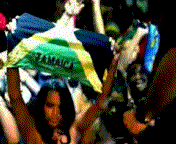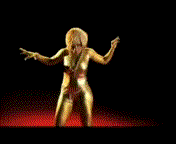
By Alva James-Johnson
South Florida Sun-Sentinel
FORT LAUDERDALE, Fla. - When Barrington Irving wants to get into the flying mood, he jumps into a tan flight suit with a logo that says: Experience Aviation.
So it is no wonder that he wore the outfit confidently as he prepared for the most daunting flight of his young life.
Irving, a 23-year-old aerospace student at Florida Memorial University, expects to take off from Opa Locka Executive Airport Friday on a mission to become the youngest person and first black pilot to fly solo around the world. "It keeps me focused and puts me in a different mode," he said, sporting the snug flight outfit Thursday. "I'm ready to fly."
Irving is founder and president of Experience Aviation, a Miami-based organization that encourages minority youths to pursue aviation careers. He is scheduled to depart about 10:30 a.m. in a Lancair Columbia 400 single-engine aircraft that he calls "Inspiration." About 2,000 elementary to high school students are expected to witness the historic event. They will be able to track Irving's flight and travel with him at experienceaviation.org, thanks to equipment donated by Microsoft.
Irving originally planned to circumnavigate the globe a year ago, but the $1 million project was delayed due to a shortage of money. He is still $20,000 short, he said, but plans to fly regardless.
"I want this completed before the year is over so kids can see that someone who started off with nothing, set a goal and completed it," he said. "Even with the challenges, everything is starting to fall in place. It's just my time."
Irving plans to fly around the world in 41 days, starting with stops in Cleveland, Ohio, and Farmingdale, N.Y. He expects to cross into Canada on Tuesday, and then travel across the Atlantic, through Europe, the Middle East and Asia. He plans to return to Miami April 30, just in time to be recognized at the McDonald's Air and Sea Show in Fort Lauderdale.
Irving said the most difficult leg would be from Japan to Alaska, as he crosses the Bering Strait.
"It has big waves and drastic weather changes," he said. But the pilot, who plans to travel with a special Bible from his mother, is not afraid.
"Because I have a strong relationship with God, I can accomplish what I'm about to do," he said.
Those who helped prepare Irving for the flight said it would be a historic moment.
"I wasn't there to see the trials and tribulations of the Tuskegee Airmen and what they went through in World War II," said Marc Henderson, community relations coordinator for Miami International Airport. "I think this is historic, not only for aviation, but for those of us of African descent."
Fabio Alexander, CEO and owner of the Opa-Locka airport, compared Irving to other aviation pioneers like the Wright brothers and the first astronauts to go to the moon.
"It took feats like this to take our minds and imagination to the moon and beyond," he said. "Aviation provides a lot of opportunities and it makes you believe."
Irving was born in Kingston, Jamaica, and grew up in the Carol City neighborhood of northwest Miami-Dade County. He saw few opportunities for success, he said. But that all changed when he met a Jamaican-American United Airlines pilot at his parents' Christian bookstore.
Capt. Gary Robinson took the then-15-year-old to the airport to see a Boeing 777. Irving was mesmerized and decided to become a pilot. He turned down college football scholarships to pursue his dream. For two years, he attended Broward Community College, majoring in aeronautical science. In 2003, he received a joint Air Force and Florida Memorial University Flight Awareness Scholarship to cover his college tuition and flying lessons.
Today, he has several pilot licenses, including private and commercial ones.
In 2003, Irving decided to make aviation history and inspire other youths. When he could not convince aircraft manufacturers to lend, lease or donate a plane for the project, he asked them to just donate the parts.
With the help of Alexander, he visited aviation trade shows and secured more than $300,000 in donated parts. Columbia Aircraft built him a $600,000 airplane, which aviation enthusiasts consider the Ferrari of small aircraft.
One of Irving's mentors was none other than Erik Lindbergh, the grandson of aviation pioneer Charles Lindbergh, who re-created his grandfather's 1927 Spirit of St. Louis transatlantic flight for its 75th anniversary.
Irving said people like Lindbergh helped him overcome many obstacles.
"For me, when someone says I can't do something, it's like a challenge," he said. "Not everyone is going to understand the vision and mission at first. But there are good people out there who will want to get involved."



